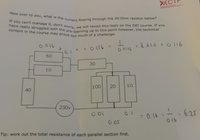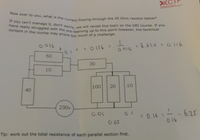Hello, sorry if this is the wrong place I cannot find Physics.
I have a problem here and I cannot figure out how to get to the given answer. I can work out the parralel but it is asking for the current through the 20 ohm resistor.
Any advice would be helpful!
See attached.
Thanks
Dan
I have a problem here and I cannot figure out how to get to the given answer. I can work out the parralel but it is asking for the current through the 20 ohm resistor.
Any advice would be helpful!
See attached.
Thanks
Dan


